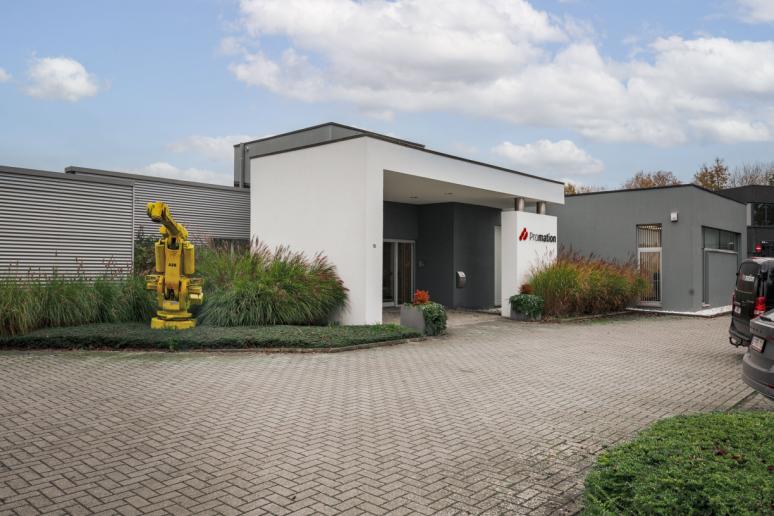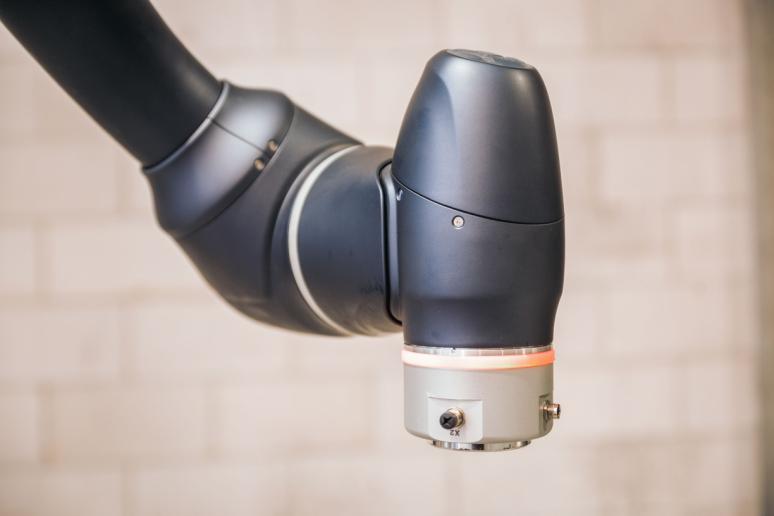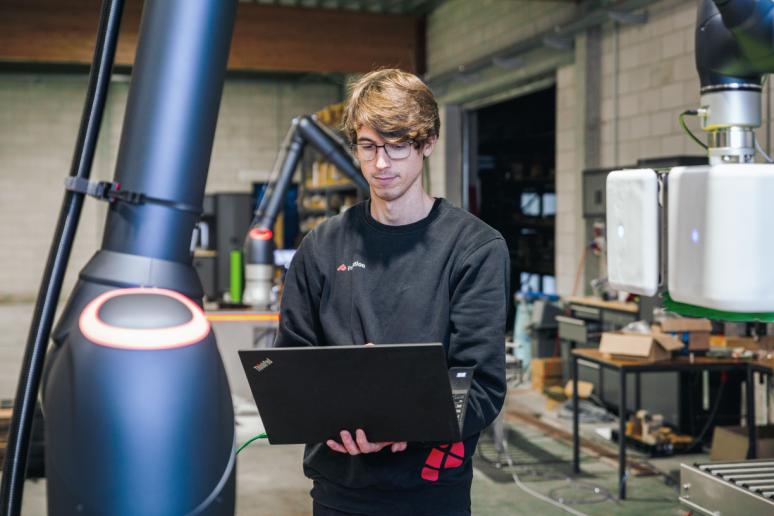How safe are cobots really?
In the world of industrial automation, cobots, or collaborative robots, are increasingly praised as the future of safe automation. They work closely with humans, are flexible in use, and are seen as a safer alternative to traditional industrial robots.
But is this really the case? Can we truly say that cobots are safe? And how safe are they?
We’re here to tell you more. We’ll also look at cobot safety in a broader sense because safety in your production process goes beyond the cobot itself.
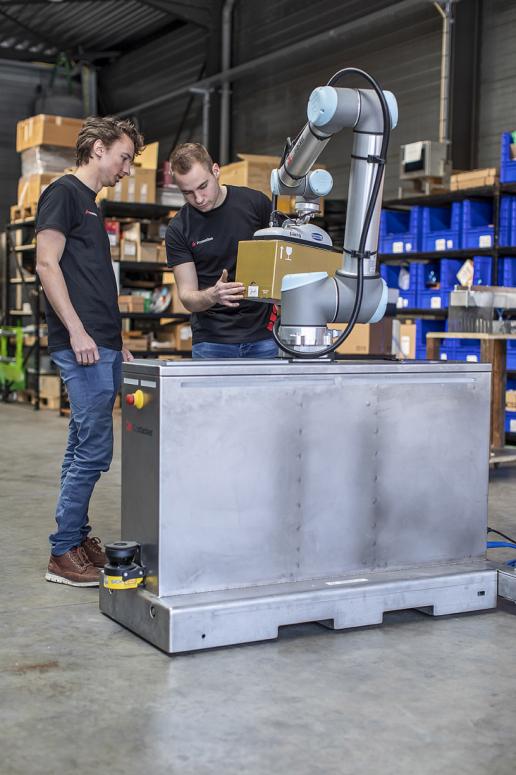
Cobots safely work together with humans
First things first: what exactly is a cobot? A cobot is a collaborative robot (the name says it all). That means they are designed to work with humans. This is the main difference between robots and cobots.
Unlike traditional industrial robots, which are often placed behind barriers to prevent accidents, cobots can work in the same space as humans.
The big advantage of industrial robotics is that they are often stronger and can work faster.
Discover more differences.
Preventive safety mechanisms
Cobots are equipped with built-in safety mechanisms, such as force and touch detection. This ensures that they stop as soon as they encounter an obstacle (read: human). Sounds safe, right?
But here’s the catch: the safety of a cobot is often oversimplified. Companies may be lulled into a false sense of security by the idea that a cobot is always safe, regardless of the application.
That’s a big misconception.
Safety factor: your cobot arm also needs a gripper
We now know that the cobot arm itself can be relatively safe. But safety is an illusion if you don’t include the gripper in the safety assessment.
A gripper can present risks
Imagine using a cobot with a gripper attached to a knife. It quickly becomes clear: no matter how advanced the cobot’s safety mechanisms are, the knife remains a dangerous object.
Even if the cobot arm stops when it encounters a human, the knife can cause serious injuries. So, the safety of the cobot doesn’t just depend on the arm but also on everything attached to it.
This means you must always consider what tool is attached to the cobot arm. Round, soft grippers with bumpers can make a collision less dangerous, but a sharp or fragile gripper can present serious risks, even at low speed.
Safety factor: your product
The gripper is just one factor. Another important factor is the product the cobot handles. Imagine using a cobot to lift and move glass plates. While the cobot arm and gripper may seem safe, there’s a real risk of injury from a breaking glass shard.
Even if the cobot arm is designed to stop in a collision, the product itself can be the danger. This shows that you shouldn’t just look at the cobot but also at what it’s doing and what it’s handling.
Risk analysis for your production process
Better safe than sorry. It’s a cliché but no less true. That’s why we map out all risks in advance. We design cobot and robot applications that keep your entire production process safe. From the cobot, the arm, and the gripper to the production environment and your product.
Investing in a cobot and deploying it in your production process is just the first step, and in our opinion, not enough to ensure safety. Before a cobot is installed, a thorough risk analysis must be carried out.
This means identifying all possible hazards, from the cobot arm and gripper to the product and environment. The goal of this analysis is to determine where the cobot might cause accidents and what measures you can take to prevent them.
Additional safety measures for cobots
Based on this, we determine if extra safety measures are needed, such as sensors that slow down or stop the cobot when a person gets too close.
Another option is to add an airskin around the cobot. This special layer detects contact and ensures that the cobot immediately stops, reducing the risk of injury.
Pressure tests are the only true safety validation
Many companies consider the basic safety of cobots to be sufficient. But as we’ve shown, many more factors determine safety. The only way to be sure that a cobot is safe is to conduct pressure tests.
These tests measure the amount of force a cobot exerts on a specific body part, such as the arm, stomach, or face. There are legal limits to how much force can be exerted on each body part, and these can only be confirmed through pressure tests.
100% safety thanks to pressure tests
At Promation, we conduct pressure tests with specialized equipment and trained personnel. This allows us to provide written proof that a cobot installation meets all legal requirements and guarantees safety.
For example, we know that a collision with a cobot at stomach height can withstand more force than a collision at face height, and we adjust our safety strategies accordingly.
Where safety sometimes fails
Unfortunately, some companies choose to avoid pressure tests and simply write off the remaining risks in a report. This is not only dangerous but also violates legal requirements.
Ignoring these risks means putting your employees in unnecessary danger. However, a cobot that has undergone a risk analysis and pressure tests offers a guaranteed higher level of safety.
It’s crucial to always opt for full validation and not cut corners on safety. At Promation, we take no half measures. Our approach ensures that your production processes are not only more efficient but also safer.
Example: the Promation Costacker
This cobot is designed to stack pallets in a safe and efficient environment. The Costacker works alongside employees, but before this cobot is put into operation, we always conduct a thorough risk analysis.
We then validate the installation with pressure tests to ensure that force limits are never exceeded. Additionally, we make sure that the gripper and the product being handled do not present additional risks.
This means that both the cobot arm and the gripper are safely designed, and we ensure that the product, such as packaged goods, does not create additional danger.
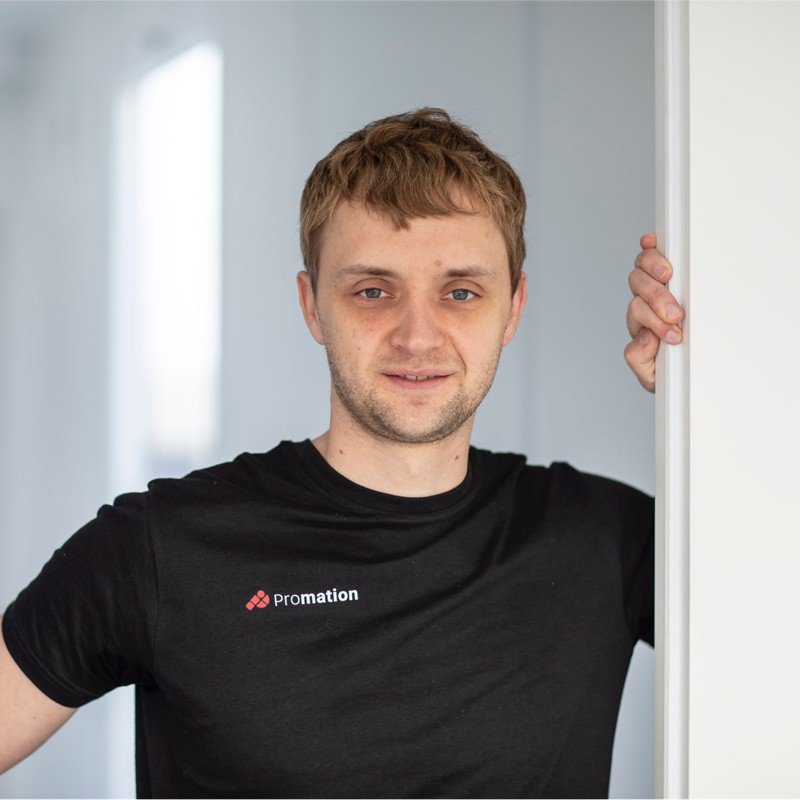
Written by Stijn Provoost
Founder of Promation. Passionate about programming and new technologies. With Promation, Stijn has one major goal: to improve production processes through industrial automation, robotics, and vision systems.
Conclusion: safety goes beyond the cobot
If your company is considering integrating cobots into its production process, it’s important to realize that safety doesn’t stop at the cobot arm. Although cobots may seem safe on their own, many more factors contribute to a safe working environment.
From the gripper to the product being handled, everything must be taken into account. The only way to be sure of safety is by conducting a thorough risk analysis and pressure tests.
Would you like to know how we can optimize and secure your production process? Use our ROI configurator to calculate which robot is the best fit for your company. Or discuss your production process with us.
